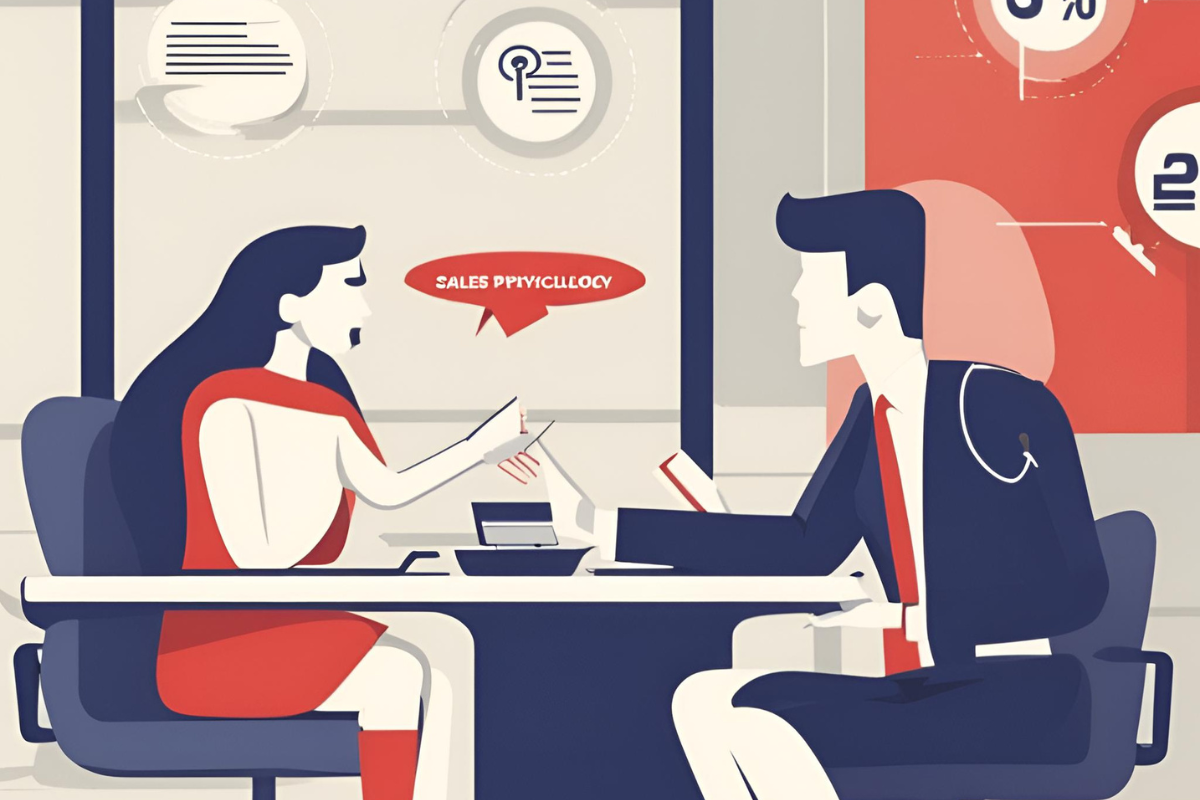Introduction
In today’s competitive business world, understanding sales psychology is a crucial element that can significantly enhance the effectiveness of your sales team. Knowing the mechanisms that influence customers’ purchasing decisions not only helps increase sales but also builds long-term relationships with customers. In this article, we’ll delve into how sales psychology can help you understand and influence customers to achieve better sales results.
What is Sales Psychology?
Sales psychology is the science of how people make purchasing decisions and how salespeople can influence those decisions. It encompasses various theories and techniques that help understand what motivates customers to buy, what factors influence their choices, and how you can use this information to boost sales.
Key Aspects of Sales Psychology
1. Understanding Customer Needs
The first step in effective selling is understanding customer needs. Customers buy products or services that solve their problems or satisfy their needs. To effectively increase sales, you must identify these needs and tailor your approach to show how your products or services can meet them.
Example: A company selling household appliances might understand that its customers are looking for devices that make daily life easier, are energy-efficient, and easy to use. By presenting its products in the context of these needs, the company can better connect with its customers.
2. Building Trust
Trust is the foundation of any successful sales transaction. Customers are more likely to buy from companies they trust. To build trust, you need to be transparent, honest, and professional. Presenting social proof, such as reviews and testimonials, can also help in building trust.
Example: A technology company might showcase reviews from satisfied customers and quality certifications to build trust in its products.
3. Utilizing Social Proof
People often look to others to determine how they should behave, especially in uncertain situations. In sales, you can use this by presenting social proof, such as the number of satisfied customers, positive reviews, or success stories. Using social proof can significantly boost sales.
Example: A restaurant might present photos of happy customers and their reviews on its social media profiles to encourage new guests to visit the establishment.
4. Applying Persuasion Techniques
There are many persuasion techniques that can be used in sales to influence customers’ decisions. Here are a few:
- Reciprocity: People feel obliged to return favors. You can use this by offering free samples or consultations.
- Scarcity: Products or services perceived as limited in availability are more desirable. Using scarcity can encourage customers to make quicker purchases.
- Social Proof: As mentioned earlier, people often imitate others’ behavior. Showing that other customers are satisfied with your product can increase sales.
- Authority: People are more likely to trust experts. Building your company’s image as an industry leader can increase trust and sales.
Example: A cosmetics company might use the authority of a well-known dermatologist who recommends its products in advertising campaigns.
5. Understanding Customer Emotions
Emotions play a crucial role in the decision-making process. People often make purchasing decisions based on emotions and then justify them with logic. Understanding what emotions drive your customers will allow you to better tailor your approach and communication to increase sales.
Example: Luxury car advertisements often appeal to emotions related to prestige, freedom, and driving pleasure, motivating customers to buy.
6. Personalizing Offers
Personalizing offers involves tailoring products, services, and communication to the individual needs and preferences of the customer. Personalization can significantly increase sales because customers feel more valued and understood. Use the data you have about your customers to create personalized offers that will be most attractive to them.
Example: An online store might use data on customers’ previous purchases to recommend products that may interest them.
How to Increase Sales Using Sales Psychology
1. Analyzing Customer Needs
Regularly analyzing customer needs allows you to better understand what your customers are looking for and what they need. Use analytical tools, surveys, and direct conversations with customers to gather this information. Based on this, adjust your products, services, and communication to better meet these needs.
Example: A consulting firm might conduct regular surveys among its clients to find out what challenges they face and how it can better assist them.
2. Training Your Sales Team
Your salespeople should be well-trained in sales psychology. Organize regular training sessions and workshops to help them understand how sales psychology works and how they can use it in practice. Training should cover techniques for building trust, applying persuasion, and personalizing offers.
Example: Organizing interpersonal communication workshops can help your sales team better understand and respond to customer needs.
3. Building Customer Relationships
Long-term relationships with customers are key to increasing sales. Focus on building relationships based on trust, loyalty, and mutual respect. Regularly communicate with customers, offer post-sale support, and ensure their satisfaction. Satisfied customers are more likely to make repeat purchases and recommend your company to others.
Example: An electronics store might offer free technical support after a purchase, increasing customer loyalty and encouraging them to return.
4. Using CRM Tools
Customer Relationship Management (CRM) tools are extremely useful in managing customer relationships and increasing sales. CRM systems allow for collecting and analyzing customer data, which enables creating personalized offers and better understanding customer needs. Use CRM to track customer interactions, analyze their behavior, and adjust your sales strategies accordingly.
Example: With CRM, a company can send personalized promotional offers to customers who have previously shown interest in certain products.
5. Leveraging Data and Analytics
Data is a valuable source of information that can help increase sales. Use analytical tools to monitor and analyze sales performance, customer behavior, and the effectiveness of marketing campaigns. Based on this data, adjust your strategies to better meet customer needs and increase sales.
Example: Sales data analysis can help identify products that are most popular during certain times of the year, allowing for better stock planning and promotional campaigns.
6. Optimizing the Sales Process
The sales process should be optimized to be as efficient and customer-friendly as possible. Analyze each stage of the sales process and identify areas for improvement. Simplifying and streamlining the purchasing process can significantly increase conversion rates and customer satisfaction.
Example: An online store might shorten and simplify the ordering process so that customers can complete their purchase quickly and easily.
Practical Techniques of Sales Psychology
1. Storytelling
People love stories. Use storytelling to talk about your product or service in a way that engages customers’ emotions. Stories about other customers’ successes and challenges overcome with your products can be very persuasive.
Example: A fitness equipment company might tell the story of a customer who managed to lose weight and improve their health thanks to their products. Such a story can evoke emotions and inspire other customers to buy.
2. Demonstrating Value
Customers want to know how your product or service can help them. Instead of focusing only on features, show the benefits it will bring to the customer. Use examples, case studies, and data to prove the value of your offer.
Example: A company offering project management software might present a case study where their tool helped another company increase work efficiency by 30%.
3. Offering Trial Versions and Guarantees
Offering free trial versions, money-back guarantees, or other forms of transaction security can encourage customers to make a purchase decision. Reducing the risk associated with the purchase makes customers feel more comfortable.
Example: A cosmetics company might offer free samples of its products so that customers can try them before purchasing full-size packages.
4. Engaging All Senses
Whenever possible, try to engage as many customer senses as possible. For example, in a physical store, you can create the right atmosphere with music and scents. For online products, use high-quality images, videos, or interactive presentations.
Example: A clothing store might use pleasant scents associated with new clothes and appropriate music to create a positive shopping atmosphere.
5. Personalized Recommendations
Use data on previous purchases and customer behavior to offer personalized recommendations. This makes customers feel appreciated and shows that you understand their needs.
Example: An e-commerce platform might use recommendation algorithms to suggest products to customers based on their previous purchases and browsing history.
Additional Strategies to Increase Sales
1. Loyalty Programs
Loyalty programs are an effective way to increase sales and retain regular customers. Offer rewards, discounts, or other benefits for repeat purchases. This gives customers an extra reason to return to your company.
Example: A coffee shop might offer a loyalty program where customers receive a free coffee after purchasing a certain number of drinks.
2. Word-of-Mouth Marketing
Word-of-mouth marketing involves leveraging positive customer opinions to promote products or services. Encourage satisfied customers to share their experiences on social media, online forums, or in conversations with others. Positive recommendations from trusted sources can significantly influence other customers’ purchasing decisions.
Example: A travel service company might encourage satisfied customers to post photos and reviews of their trips on social media.
3. Remarketing
Remarketing is a technique that allows you to reach people who have previously visited your website but did not make a purchase. Displaying personalized ads to these users can remind them of your offer and encourage them to return to the site to complete their purchase.
Example: An online store might use remarketing to display ads for products that users viewed but did not buy.
4. Using Influencers
Collaborating with influencers can help reach a broader audience of potential customers. Influencers have a significant impact on their followers, so recommendations from them can increase trust in your brand and encourage purchases.
Example: A clothing brand might collaborate with popular fashion influencers who will promote their products on their social media channels.
5. Testing and Optimization
Continuous testing and optimization of sales strategies are crucial for achieving the best results. Use A/B testing to determine which elements of your website, marketing campaigns, or offers work best. Based on the results of these tests, make necessary changes and improvements.
Example: Conducting A/B tests on a website to see which version attracts more customers and generates higher sales.
Conclusion
Sales psychology is an invaluable tool that can significantly increase your sales. Understanding customer needs, building trust, using persuasion techniques, and personalizing offers are key elements that will help you achieve better results. Remember that success in sales is not just about offering excellent products but also about the ability to influence customers’ purchasing decisions and building long-lasting relationships with them. Use knowledge from the field of sales psychology to boost your sales and succeed in a competitive market.
Free consultation
Send an inquiry
Contact us to learn how we can improve sales in your company. During a free consultation, you’ll find out which actions will be more optimal for your company!




